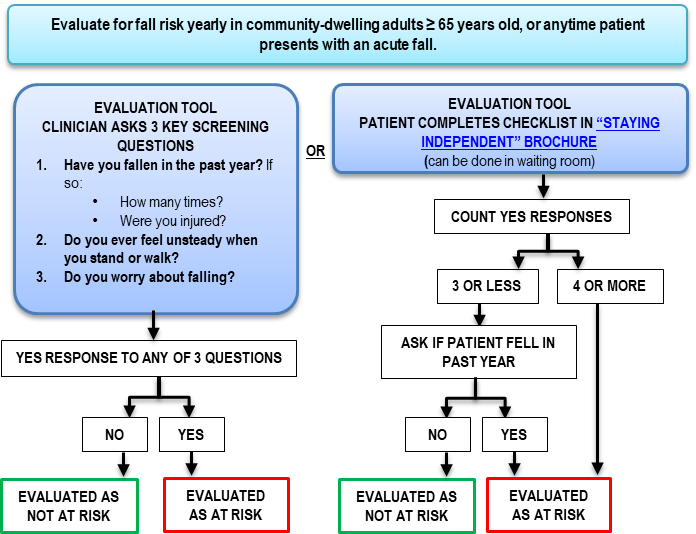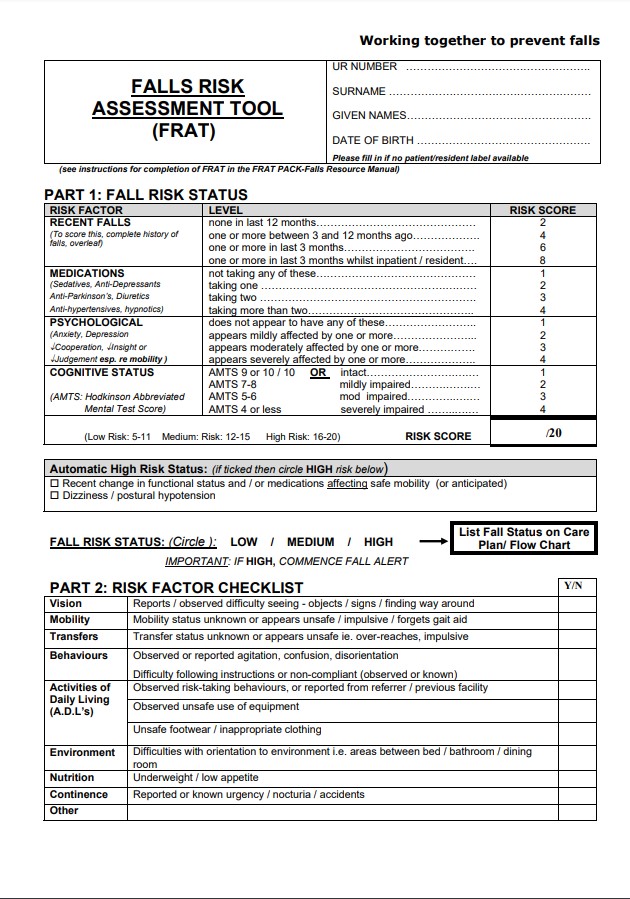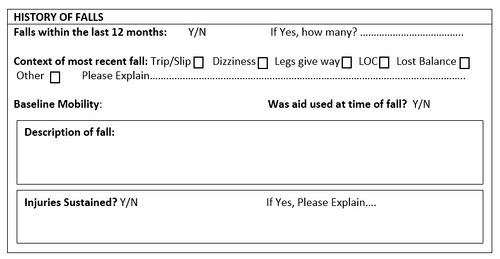A Biased View of Dementia Fall Risk
Table of ContentsAll About Dementia Fall RiskExcitement About Dementia Fall RiskWhat Does Dementia Fall Risk Do?What Does Dementia Fall Risk Do?
A fall threat evaluation checks to see just how likely it is that you will certainly fall. It is mainly provided for older adults. The assessment generally consists of: This consists of a series of inquiries concerning your overall wellness and if you've had previous falls or troubles with balance, standing, and/or strolling. These devices evaluate your strength, balance, and gait (the method you stroll).Treatments are recommendations that may lower your danger of falling. STEADI includes 3 actions: you for your danger of falling for your threat aspects that can be enhanced to try to protect against drops (for example, equilibrium issues, impaired vision) to lower your danger of falling by making use of reliable methods (for example, supplying education and sources), you may be asked a number of questions consisting of: Have you fallen in the previous year? Are you worried concerning falling?
You'll sit down once again. Your provider will certainly examine for how long it takes you to do this. If it takes you 12 seconds or even more, it might imply you go to greater threat for a loss. This examination checks toughness and equilibrium. You'll being in a chair with your arms crossed over your upper body.
The settings will certainly obtain more challenging as you go. Stand with your feet side-by-side. Move one foot midway onward, so the instep is touching the huge toe of your various other foot. Relocate one foot fully before the other, so the toes are touching the heel of your other foot.
The Main Principles Of Dementia Fall Risk
The majority of falls occur as a result of numerous adding aspects; consequently, handling the threat of dropping begins with determining the factors that contribute to drop risk - Dementia Fall Risk. Some of one of the most pertinent danger aspects include: Background of previous fallsChronic medical conditionsAcute illnessImpaired gait and balance, reduced extremity weaknessCognitive impairmentChanges in visionCertain high-risk medicines and polypharmacyEnvironmental aspects can likewise increase the risk for drops, including: Inadequate lightingUneven or damaged flooringWet or unsafe floorsMissing or damaged hand rails and order barsDamaged or incorrectly fitted equipment, such as beds, mobility devices, or walkersImproper usage of assistive devicesInadequate supervision of individuals living in the NF, consisting of those who exhibit hostile behaviorsA successful loss threat administration program requires a thorough clinical evaluation, with input from all members of the interdisciplinary team

The treatment plan ought to also consist of interventions that are system-based, such as those that advertise a risk-free environment (proper illumination, hand rails, get bars, etc). The efficiency of the interventions must be examined periodically, and the treatment plan changed as essential to show adjustments in the fall risk evaluation. Executing a loss danger monitoring system using evidence-based finest technique can decrease the prevalence of falls in the NF, while restricting the capacity for fall-related injuries.
The Dementia Fall Risk PDFs
The AGS/BGS standard suggests evaluating all adults aged 65 years and older for fall risk every year. This testing contains asking patients whether they have fallen 2 or more times in the previous year or sought clinical attention for a loss, or, if they have not fallen, whether they really feel unsteady when strolling.
People who have actually dropped when without injury needs to have their balance and gait assessed; those with gait or balance abnormalities should obtain additional assessment. A Get the facts background of 1 fall without injury and without stride or equilibrium issues does pop over to this web-site not necessitate more evaluation past continued annual autumn danger testing. Dementia Fall Risk. A fall threat assessment is called for as component of the Welcome to Medicare assessment

Getting My Dementia Fall Risk To Work
Recording a drops history is one of the top quality indicators for autumn avoidance and management. copyright medications in specific are independent forecasters of falls.
Postural hypotension can frequently be eased by decreasing the dose of blood pressurelowering medications and/or stopping medicines that have orthostatic hypotension as an adverse effects. Usage of above-the-knee assistance tube and copulating the head of the bed raised might additionally lower postural reductions in high blood pressure. The advisable components of a fall-focused physical exam are received Box 1.

A Yank time higher than or equal to 12 seconds recommends high autumn risk. Being unable to stand up from a chair of knee elevation without utilizing one's arms indicates enhanced autumn risk.